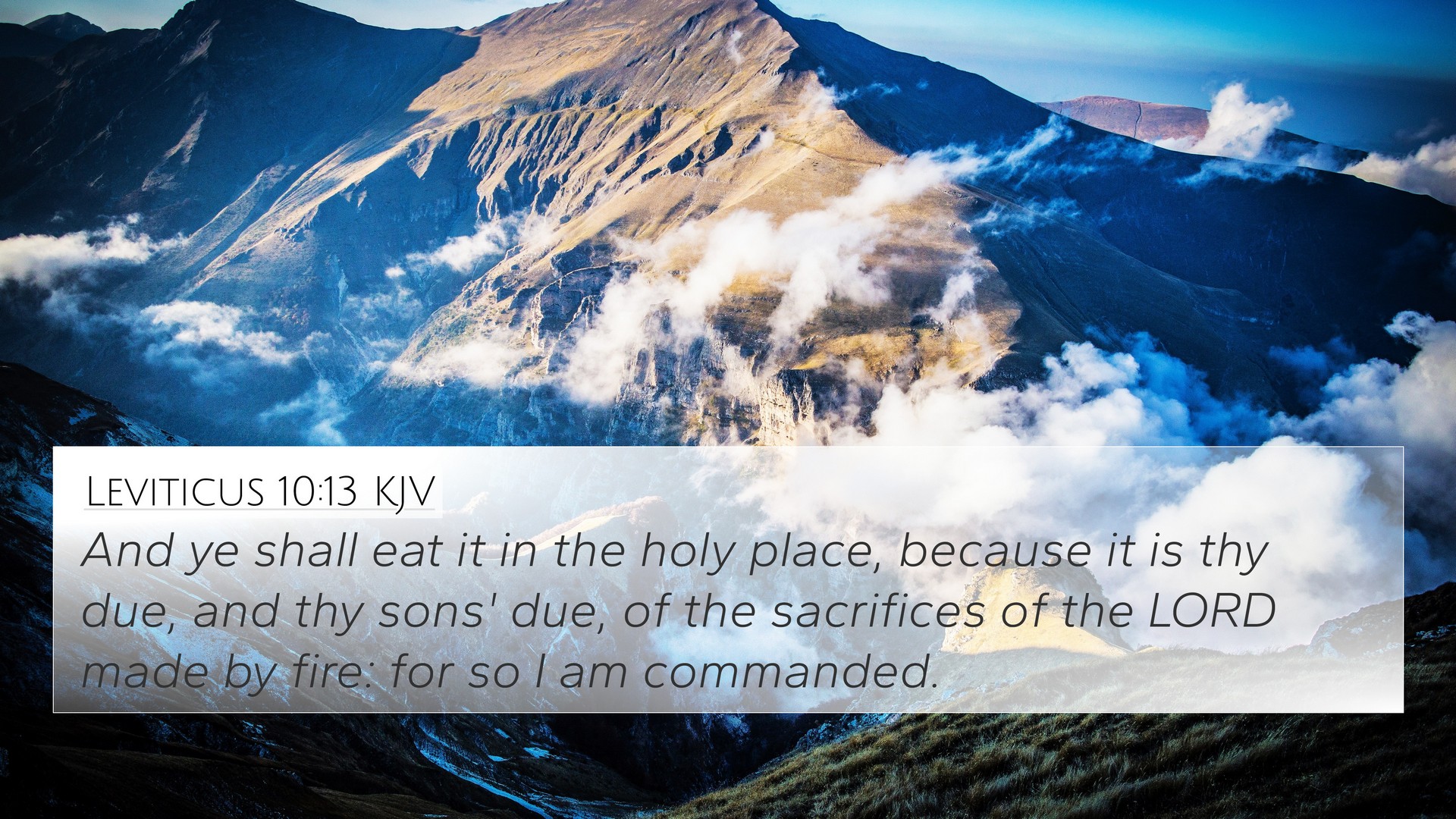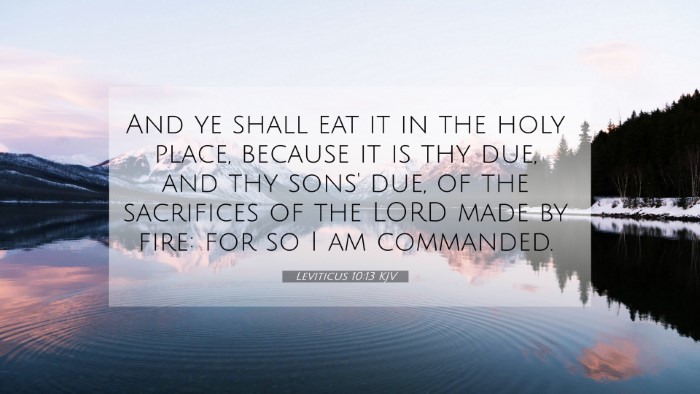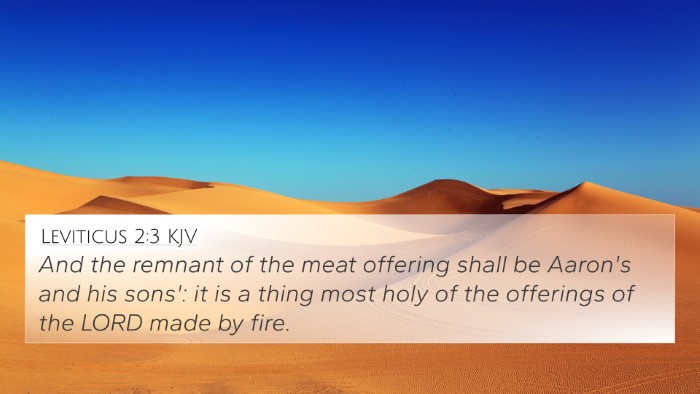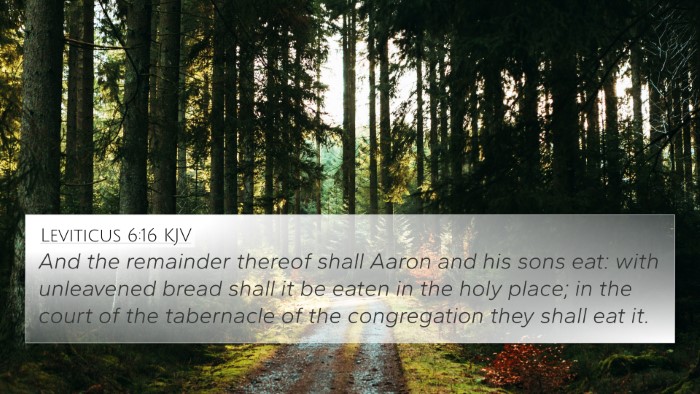Understanding Leviticus 10:13
Verse: "And ye shall eat it in the holy place, because it is thy due and thy sons' due, of the sacrifices of the LORD made by fire: for so I am commanded."
Verse Meaning and Commentary
The instruction in Leviticus 10:13 revolves around the specific ceremonial practices related to the priests' consumption of the offerings made to God. This verse sheds light on the holiness and sanctity required in the priestly duties.
Matthew Henry's Commentary: Matthew Henry emphasizes the importance of food that is holy, dedicated to God, and how this reflects the priest's sacred role. The act of consuming the sacrifices in a holy place not only fulfills a command but also signifies the priests' connection to God’s provisions.
Adam Clarke's Commentary: Adam Clarke notes that this regulation ensures that the priests are sustained by what is sacred, thus providing them with spiritual nourishment. This verse reinforces the principle that those who serve God should also partake in the blessings of worship.
Albert Barnes' Commentary: Barnes highlights that these dietary laws for the priests also serve a dual purpose – they signify the honor that should be associated with the offerings given to God and also allow the priests to maintain their holiness while performing their duties.
Thematic Connections and Cross-References
Leviticus 10:13 relates closely to various themes and biblical teachings emphasizing the importance of holiness in worship and the role of the priesthood in Israel. Below are some important cross-references that illustrate these connections:
- Exodus 29:33: This verse discusses the food of the offerings being for the priests, reinforcing the notion of their sacred sustenance.
- Leviticus 6:16: It describes how the priests are instructed to eat the offerings, further expanding on the concept of holy and dedicated food.
- Leviticus 21:22: Here it specifies that the priests are to partake in the holy offerings, ensuring their position remains honorable and blessed.
- Deuteronomy 18:1-2: This passage discusses the Levites' rights to the offerings, affirming their share as part of God's design for the priestly tribe.
- Numbers 18:8-10: This extends the principles of Leviticus 10:13, as it provides specific guidelines on what the priests can eat and how it must be treated.
- Hebrews 5:4: Reflecting on priestly duties and the divine command regarding offerings, this New Testament passage underscores the continuity of priestly roles.
- Malachi 1:6-8: This challenges the attitudes toward offerings, illustrating the high regard the Lord holds for proper sacrificial practices.
Tools for Understanding Cross-References
For deeper study and understanding of Leviticus 10:13 and its connections within the Bible, consider utilizing the following tools:
- Bible Concordance: A comprehensive tool to find and reference specific terms across Scripture.
- Bible Cross-Reference Guide: Essential for discovering interrelated themes and texts.
- Bible Chain References: A method for following themes through verses sequentially.
- Cross-Reference System: A systematized approach to studying biblical relationships among texts.
Conclusion
The study of Leviticus 10:13 opens avenues to understanding the sanctity of worship and the vital role of the priesthood in receiving and consuming that which is holy. By recognizing and cross-referencing related scriptures, one can gain a fuller comprehension of biblical themes tied together by the principles of holiness, sacrifice, and divine command.
Further Study
For those wanting to delve further into biblical studies, consider exploring:
- Identifying connections between the Old and New Testament.
- Comparative studies of the Pauline epistles.
- Cross-referencing themes in the Psalms and New Testament teachings.
- How to find cross-references to enhance sermon preparation.





